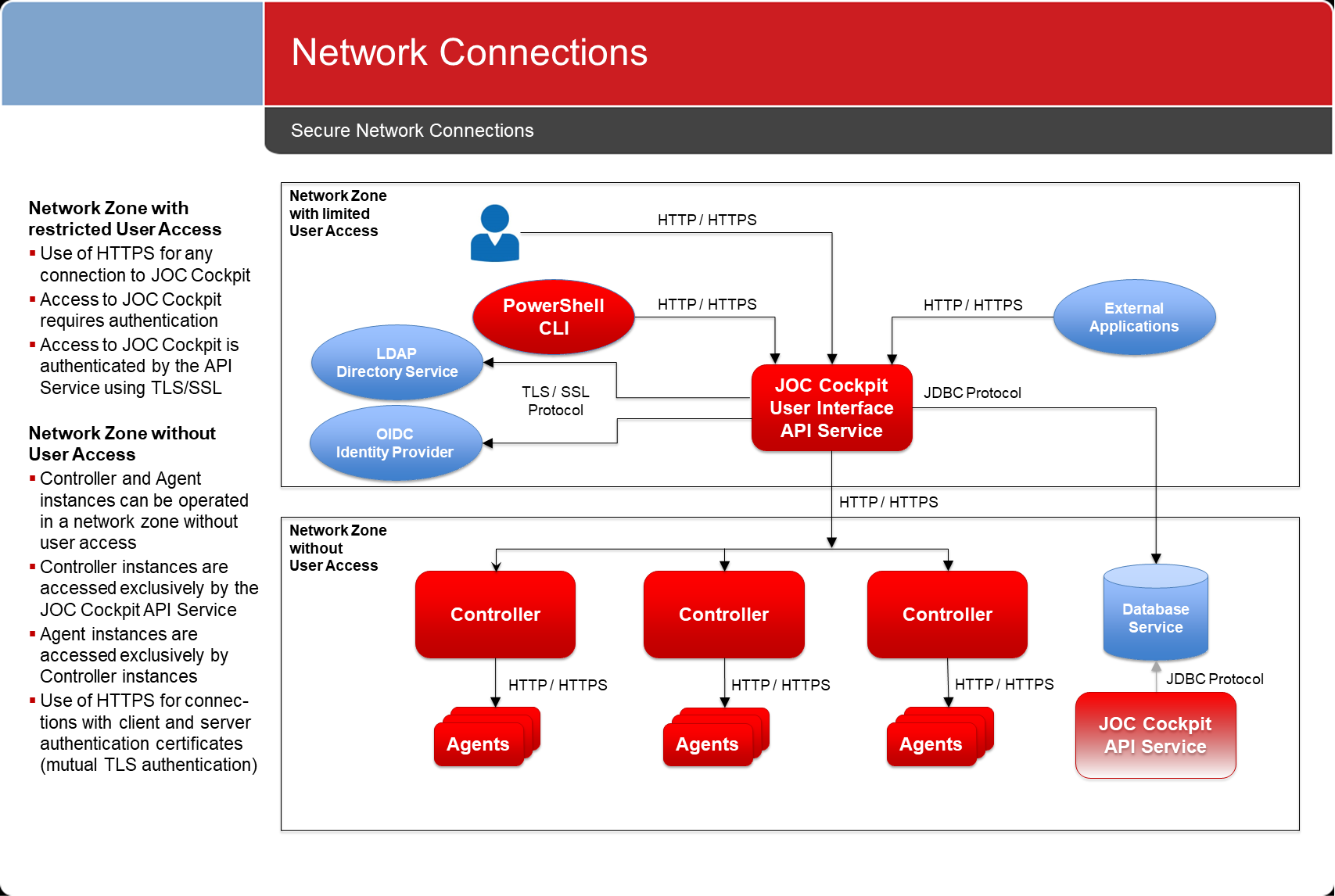Introduction
- The system architecture describes:
- system boundaries
- components
- platforms
- setup scenarios
System Architecture
- Download: JS7_JobScheduler_System_Architecture.pptx
- Download: JS7_JobScheduler_System_Architecture.pdf
- Download from the links above if the document below does not display in your browser.
Basic System Architecture
The JS7 makes use of the following components:
- The JOC Cockpit is used to manage the inventory of scheduling objects, to monitor and to control workflow execution and to access the JS7 - History.
- The Controller is used to orchestrate Agents, to pass orders for workflow execution to Agents and to deploy workflows and the JS7 - Daily Plan to Agents.
- Agents are dedicated to a Controller and are used to execute workflows and jobs. Agents act autonomously for workflows that execute any included jobs with the same Agent.
All JS7 components can be clustered:
- JOC Cockpit and Controller each implement a passive cluster with an active node and a standby node.
- Agents can be operated standalone or as instances of a JS7 - Agent Cluster that implements active-passive or active-active scheduling.
Components
The components interact as described in the slide below:
- The JOC Cockpit implements:
- the user interface for access by browsers.
- the JS7 - REST Web Service API that
- is connected to a database which persistently stores the inventory and the history of workflow executions.
- performs any operations to manage Controllers.
- The Controller connects to Agents:
- for JS7 - Deployment of workflows,
- to forward orders for workflow execution,
- to receive execution results from Agents.
- The Agents:
- execute workflows and jobs,
- return execution results and log output to the Controller.
Network Connections
Network connections are established in the indicated directions only.
- Any connections are unilateral to simplify network access.
- Connections can be secured by TLS/SSL certificates.
Summary
- Components
- JOC Cockpit: manages workflow configuration, monitors and controls workflow execution
- Controller: orchestrates Agents, manages workflow execution
- Agents: execute workflows and return the execution history and log output
- Operation
- JOC Cockpit can be operated in the following modes:
- as a standalone instance,
- as a cluster with one active instance and any number of standby instances.
- The Controller can be operated:
- as a standalone instance,
- as a cluster with one active instance and one standby instance.
- Agents can be operated:
- as a single instance,
- as a passive cluster with one active instance and any number of standby instances,
- as an active cluster with any number of active instances.
- JOC Cockpit can be operated in the following modes:
- Network Connections
- JOC Cockpit connects to Controller instances and connects to a database
- Controllers connect to Agents
- Network connections are firewall friendly, a single connection is initiated between each component
- Platforms
- JOC Cockpit: Windows, Linux
- Controller: Windows, Linux
- Agent: any platform that provides a Java Virtual Machine
- Setup Scenarios
- Standalone Server
- High Availability Controller
- High Availability Controller and JOC Cockpit
- Multi-Client Capability
Overview
Content Tools
